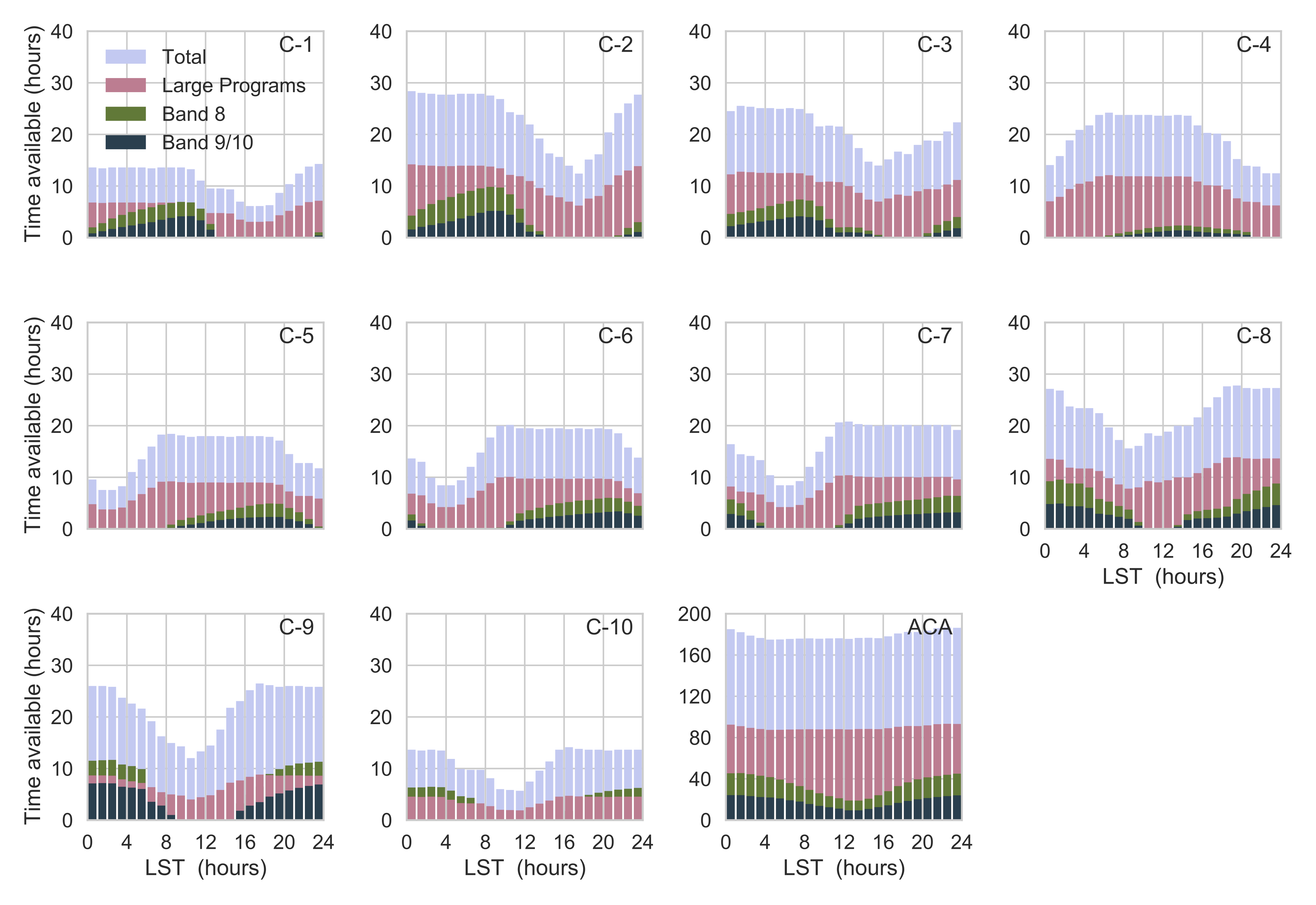ALMA Cycle 9 Pre-Announcement
The Joint ALMA Observatory (JAO) will start Cycle 9 observations in October 2022. A Call for Proposals (CfP) with detailed information on Cycle 9 is anticipated to be issued in March 2022 and the deadline for proposal submission will be in April 2022. The purpose of this pre-announcement is to highlight aspects of the CfP to assist with early planning.
General information
ALMA Cycle 9 will start in October 2022 and will span 12 months. The JAO anticipates having 4300 hours for approved science observations on the 12-m Array and 4300 hours on the Atacama Compact Array (ACA), also known as the Morita Array. Projects with observations in the highest-frequency Bands 8, 9, and 10 are strongly encouraged.
The key dates (anticipated) for Cycle 9 are:
| 15 Dec 2021 | Cycle 9 pre-announcement |
| 24 Mar 2022 | Release of the ALMA Cycle 9 CfP and Observing Tool, and opening of the archive for proposal submission |
| 21 Apr 2022 | Proposal submission deadline |
| Aug 2022 | Results of the proposal review sent to proposers |
| 1 Oct 2022 | Start of Cycle 9 observations |
The proposal types in Cycle 9 will be the same as in Cycle 8 2021. Principal Investigators submitting a proposal to ALMA for Very Long Baseline Interferometry (VLBI) observations in ALMA Band 3 made in concert with the Global mm-VLBI Array (GMVA) at 3 mm must also submit a proposal to the GMVA by its 1 February 2022 deadline.
In the main 12-m Array, antenna configurations C-1 to C-10, with maximum baselines between 0.16 and 16.2 km, will be offered.
For Cycle 9 the JAO will only issue a Supplemental Call for the ACA in stand-alone mode if needed for scheduling purposes. Therefore, proposers are encouraged to submit ACA stand-alone proposals for the Main Call. In particular, proposers are encouraged to submit ACA stand-alone observations for targets that can be observed in the LST range of 20h to 10h.
New in Cycle 9
The following technical capabilities will be available this Cycle for the first time:
- Solar Total Power regional mapping scans in bands 3, 5, 6, and 7
- VLBI continuum observations in Band 7
- VLBI spectral line observations in Band 3
- High-frequency and long-baseline observations, including Band 8 in configurations up through C-10, Band 9 in configurations up through C-9, and Band 10 in configurations up through C-8
The total time available for projects needing band-to-band phase transfer calibration is expected to be capped at approximately 45 hours.
Updates to the Proposal Review Process
- All proposal requesting less than 50 hours on the 12-m Array, and ACA stand-alone proposals requesting less than 150 hours on the 7-m Array, will be reviewed through the distributed peer review system.
- Large Programs will be reviewed by a panel of experts.
- As done in Cycle 8 2021, all Cycle 9 proposals will be reviewed through a dual-anonymous procedure.
Configuration schedule
The following table summarizes the anticipated configuration schedule. The table includes the start date of the configuration, the longest baseline, and the LST range with the best atmospheric stability, which is approximately from two hours after sunset to four hours after sunrise. The configuration schedule may be modified based on the Cycle 9 proposal pressure.
| Start date | Config | Longest baseline | LST: Best conditions |
| 1-Oct-22 | C-3 | 0.50 | 22-10 |
| 20-Oct-22 | C-2 | 0.31 | 23-11 |
| 10-Nov-22 | C-1 | 0.16 | 1-13 |
| 30-Nov-22 | C-2 | 0.31 | 2-14 |
| 20-Dec-22 | C-3 | 0.50 | 4-15 |
| 10-Jan-23 | C-4 | 0.78 | 5-17 |
| 1-Feb-23 | No observations due to maintenance | ||
| 1-Mar-23 | C-4 | 0.78 | 8-21 |
| 20-Mar-23 | C-5 | 1.4 | 9-23 |
| 20-Apr-23 | C-6 | 2.5 | 11-1 |
| 20-May-23 | C-7 | 3.6 | 13-3 |
| 20-Jun-23 | C-8 | 8.5 | 14-5 |
| 11-Jul-23 | C-9 | 13.9 | 16-6 |
| 30-Jul-23 | C-10 | 16.2 | 17-7 |
| 20-Aug-23 | C-9 | 13.9 | 19-8 |
| 10-Sep-23 | C-8 | 8.5 | 20-9 |

Figure 1: Estimated observing time available per configuration for executing PI projects, based on precipitable water vapor (PWV) only. For example, approximately 24 hours are expected to be available in C-4 at LST 05 h for all observations and up to 12 h of those may be allocated to Large Programs. The time available for Large Programs is shown in pink and time for high-frequency observations in green and dark blue. While Band 9 and 10 have the same PWV limits, Band 10 will only be offered up to C-8 in Cycle 9 – in the C-9 panel the histogram labeled “Band 9/10” only applies to Band 9. The configuration schedule and, consequently, the total number of hours available per configuration may change in response to proposal pressure. The data files containing these histograms are available here.
